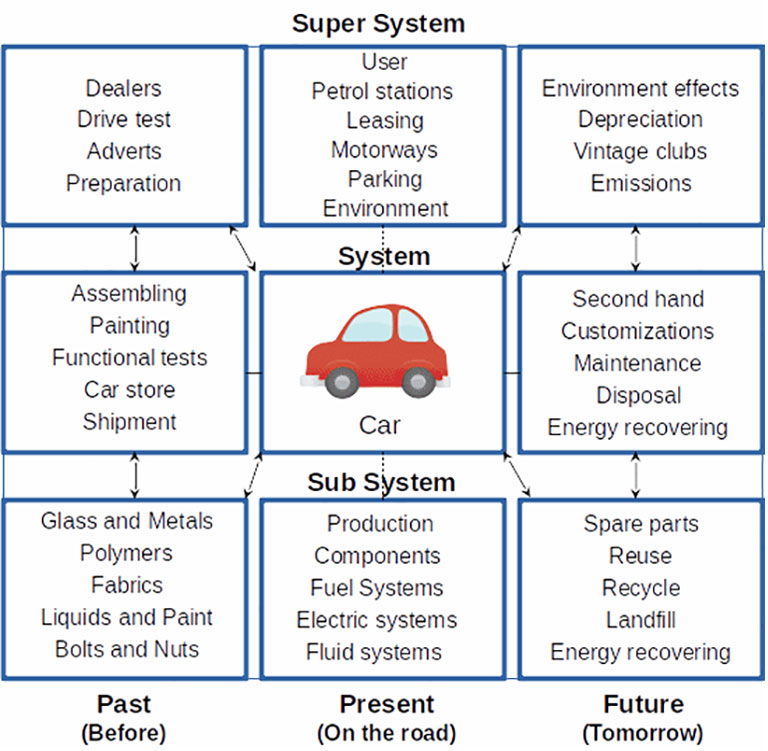INNOVATION IS NOT A PRIVILEGE OF A FEW
Published: 07/11/2019

Innovation is a mindset and a daily job that brings new opportunities for growth. But to exploit it better it should be well focused and we must be able to overtake the “psychological inertia” of our brain. One thing makes me happy, the fact that being innovative isn’t a privilege of few people, or people coming from an other Planet. Any human being has sparks of creativity and can be extremely innovative in his specific field.
We know there are several ways and different levels of innovation (from incremental innovation to new inventions such as the laser beam). Everyone make sense and can be an added value within its specific context.
As explained in one of my previous documents, innovation follows specific paths and processes. The “S” curve analogy provides to us a first path to move toward it. Another important element is the fact that the S curve can be applied to ANY element of ANY industrial system. Anything in our life follow that curve. There are several tools to evolve a product or a system in a innovative way. The one I like most is TRIZ Methodology, the methodology invented by Genrich Altshuller. The name is a Russian acronym “Theoria Resheneyva Isobretatelskehuh Zadach” which in English means the “Theory of Inventive Problem Solving”. Thanks to this it is possible to avoid many of the trial-error situations, a typical approach often used in the innovation or evolution of products and systems. Very fascinating, just as the life story of its inventor!
CLEAN YOUR NINE WINDOWS
Our materials (Polymers) act in the so called “sub system” as we will see in a minute. It is important to know that Polymers and their conversion systems are not different from ANY other engineering system or product, their innovations and evolution follow the same paths.
All inventors resolve the contradictions in the same ways to evolve their systems in the direction of a better, safer, more responsive and now a day more environmentally friendly solutions (eg. lower energy consumption, lower CO2 emissions).
To have an idea of it we can give a look to past evolution. The memory shape products, the new 3D technologies, Graphene polymers, the growing Hybrid polymers (partially bio) or the fully Bio-polymer families ( which eventually will follow the S curve evolution as it was for their fossil brothers). What a great creativity behind any innovation!
At this point I think it is nice to discover that creativity can be helped, increased, with structured approaches. One of them, which I like very much, is the: “9 windows” approach. This tool/approach seems it was naturally adopted also by Leonardo da Vinci. By looking at a problem through these 9 windows (the number of windows can be increased depending from the situation or how deep we would like to go) we introduce in the innovation equation, two important elements: the “time” and the “space”.
These two elements force the brain to think wider and to overtake the so called “psychological inertia” that push us to focus the attention only to the present, the current situation. People without a proper training focus their attention on the specific problem and to its close surrounding, missing in that way other potential solutions and future opportunities for innovation.
A TOOL FOR TODAY AND FUTURE INNOVATIVE SOLUTIONS
Thanks to this approach there are more chances to look above the “here and now” condition.
This tool makes immediately clear and available 3 main areas (spaces) of investigation: the System (which includes the area in which the product moves along); the Subsystem (which includes all the elements that contribute to the product creation) and the Super-system (the area in which the product will move, interact, in its life. Its world).
These three important levels of interconnection are analyzed and confronted in view of other 3 main moments (times): the Present (the “here and now” in which the problem appear, or the idea is working), the Past (where all operations, procedures, take place before the “here and now ” moment) and the Future (the future operations, procedures that could be part of the end of life of our product).
FIND THE BEST ONE ACCORDING TO FOR YOUR POSITION
In each of these 9 windows, according to the position, capabilities, knowledge of the Company, we can think of a solution, evolution or innovation, for our Product or Engineering System. The past and the future can be of course enlarged into a recent past and remote past or future. The same enlargement can be applied to the Super system and the Subsystem. This depends on how deep we would like (or we need) to enter in the solution-opportunity matrix to reach the best answer to our problem.
2MILA EXPERIENCE IS AVAILABLE FOR YOU
We are working with polymers (techno-polymers) and its thanks to them and to our innovative attitude that we are in business from many years and we have helped with them many companies to evolve their products and their systems.
Often, polymers have offered are tailor made and offer a great help for solutions or for the opening of a new and innovative phase, mainly in the Subsystem (compound) area but with positive effects on the System and, sometimes, on the Super System too (associations, standards). Looking at the 9-window matrix it becomes clear that this approach can be adapted to any situation or any problem whenever you need, or want, to change or to innovate. This fantastic tool we like to share with you can work nicely in any industrial field, but it can be an asset also in the field of services.

Article by Emilio Sitta
Share the article on your favorite social:
Did you find the article interesting?


Are there any topics you'd like to see covered in this blog?
Your comments and requests are important to us: write them in the space below, it's available to you!